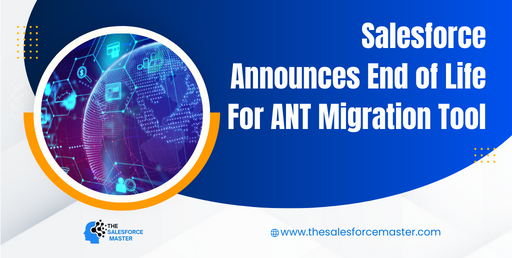
Salesforce, a leading provider of cloud-based customer relationship management (CRM) solutions, has recently announced the end-of-life (EOL) for its ANT Migration Tool, a crucial component for deploying metadata and managing changes within Salesforce environments. This decision marks a significant shift in the platform’s approach to development and deployment processes, impacting thousands of Salesforce developers and administrators worldwide.
The ANT Migration Tool, an abbreviation for Another Neat Tool, has been a staple in the Salesforce ecosystem for over a decade. It provided developers with a command-line interface for deploying metadata between Salesforce organizations, enabling version control, continuous integration, and automated deployments. Its simplicity and flexibility made it a preferred choice for many Salesforce developers, especially those accustomed to traditional software development methodologies.

However, as Salesforce continues to evolve its platform and introduce new features, technologies, and best practices, the ANT Migration Tool has become increasingly outdated and less aligned with modern development practices. Its reliance on XML-based metadata files and complex configuration made it cumbersome to use, particularly for large-scale projects or teams adopting agile and DevOps methodologies.
In response to these challenges, Salesforce has decided to retire the ANT Migration Tool and encourage users to transition to newer and more efficient deployment tools, such as Salesforce CLI (Command Line Interface) and Salesforce DX (Developer Experience). These tools are built on modern technologies and offer enhanced capabilities for source-driven development, modular packaging, and seamless collaboration across development teams.
The decision to sunset the ANT Migration Tool reflects Salesforce’s commitment to innovation and providing its users with tools that streamline development processes, improve productivity, and support emerging trends in software development. By focusing on Salesforce CLI and Salesforce DX, Salesforce aims to empower developers to build and deliver high-quality applications on the Salesforce platform more efficiently and effectively.

The transition away from the ANT Migration Tool may pose challenges for organizations and developers accustomed to its workflow and functionality. However, Salesforce is offering comprehensive documentation, training resources, and migration guides to help users make a smooth transition to the new tools. Additionally, Salesforce is actively engaging with its community through forums, webinars, and events to address any concerns and gather feedback to further improve its development tools and processes.
For organizations currently using the ANT Migration Tool, it is essential to assess their existing deployment processes and develop a migration plan to adopt Salesforce CLI and Salesforce DX effectively. This may involve updating scripts, adjusting workflows, and retraining team members to leverage the new tools and methodologies effectively. While the transition may require time and effort upfront, the long-term benefits of adopting modern development practices and tools are significant, including improved agility, collaboration, and innovation.
Conclusion
Salesforce’s decision to retire the ANT Migration Tool signifies a strategic shift towards modernizing its development tools and processes to better align with the evolving needs of its users and the broader software development community. While the transition may present challenges, it also presents an opportunity for organizations to embrace new technologies and practices that drive greater efficiency, scalability, and success on the Salesforce platform. By investing in the adoption of Salesforce CLI and Salesforce DX, organizations can position themselves for long-term success and innovation in the rapidly evolving digital landscape.


